Warm, natural clay siding effortlessly bridges classic curb appeal and modern eco-minded style. Its earthy undertones complement countless architectural eras, thrive beside stone, wood, or metal, and—because the hue absorbs and softens light—create a cozy welcome in every season. Below you’ll find twenty distinctive design ideas that harness clay’s versatility. Each paragraph delivers a focused concept, practical detailing tips, and color-pairing guidance so you can translate inspiration into hammer-and-nails reality—whether you’re building anew or refreshing an existing façade. Explore how subtle shifts in trim, roof, and accent palettes turn one humble neutral into a spectrum of character-rich exteriors.
1. Classic Colonial Clay with Stately Black Shutters

A stately Colonial remains timeless when warm clay clapboards meet crisp white cornices and inky shutters. The high-contrast shutters delineate the symmetrical windows, while a matching black door anchors the entry, increasing perceived home value by up to 10 percent according to industry surveys. Swap brass hardware for matte iron to echo the dark accents and let the clay body supply softness beneath a mid-tone roof. Choose low-sheen paint on shutters to avoid glare and allow seasonal wreaths or patriotic buntings to pop without adding permanent color. Allura USA
2. Monochromatic Warmth for Craftsman Charm
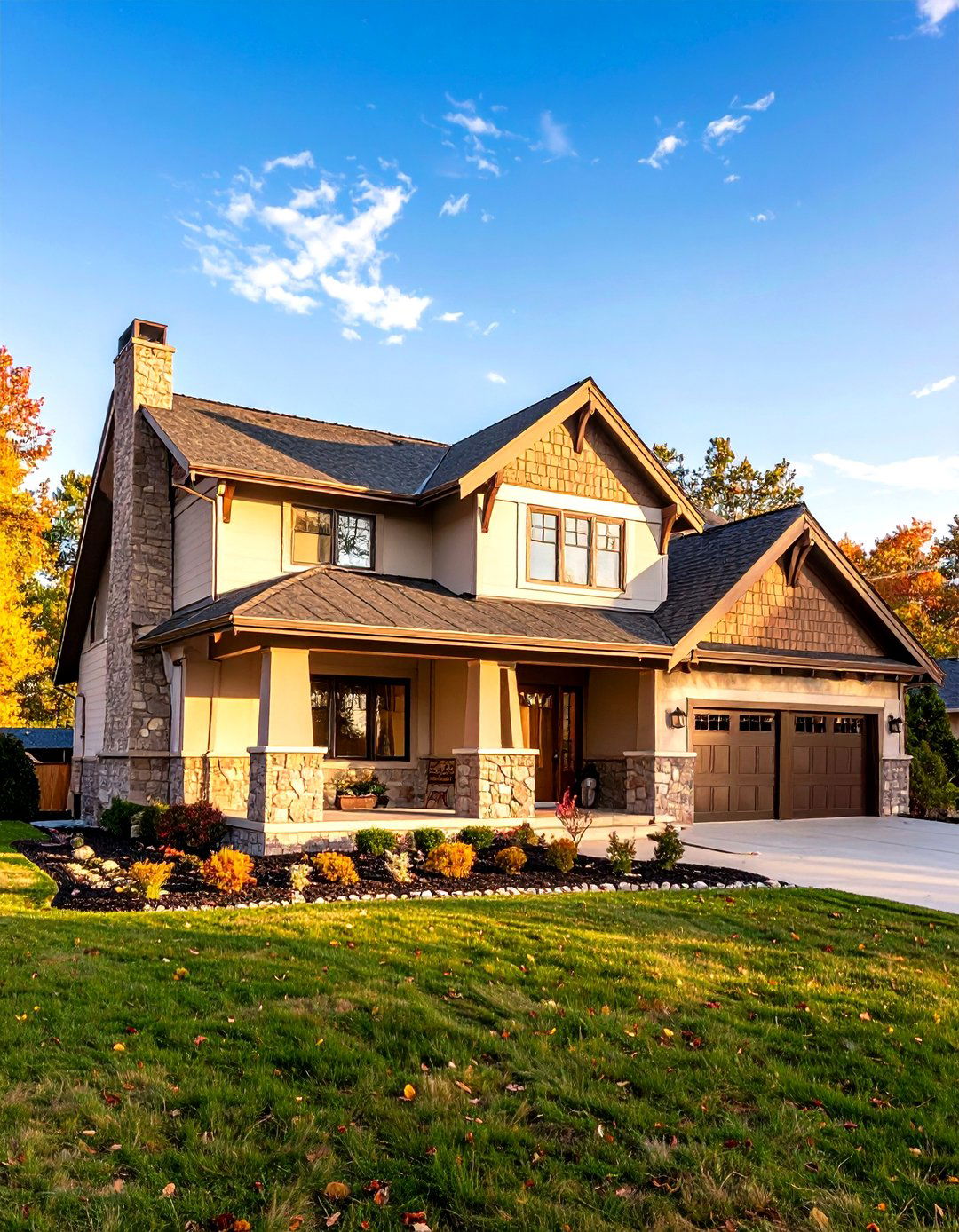
Layering clay siding beneath a medium-brown shingle roof and deeper chocolate garage doors creates an inviting tonal gradient that flatters widened Craftsman eaves. Keep fascia and porch columns the lightest shade in the spectrum so architectural details stay legible. A monochrome approach simplifies touch-ups because undertones remain consistent; simply keep extra gallons labeled by area. Integrate textured shakes in the gables for added depth without breaking the tonal family, then finish with pebble-washed concrete steps to echo the earthen palette and improve slip resistance. Allura USA
3. Slate-Roof Contrast for New-Traditional Appeal
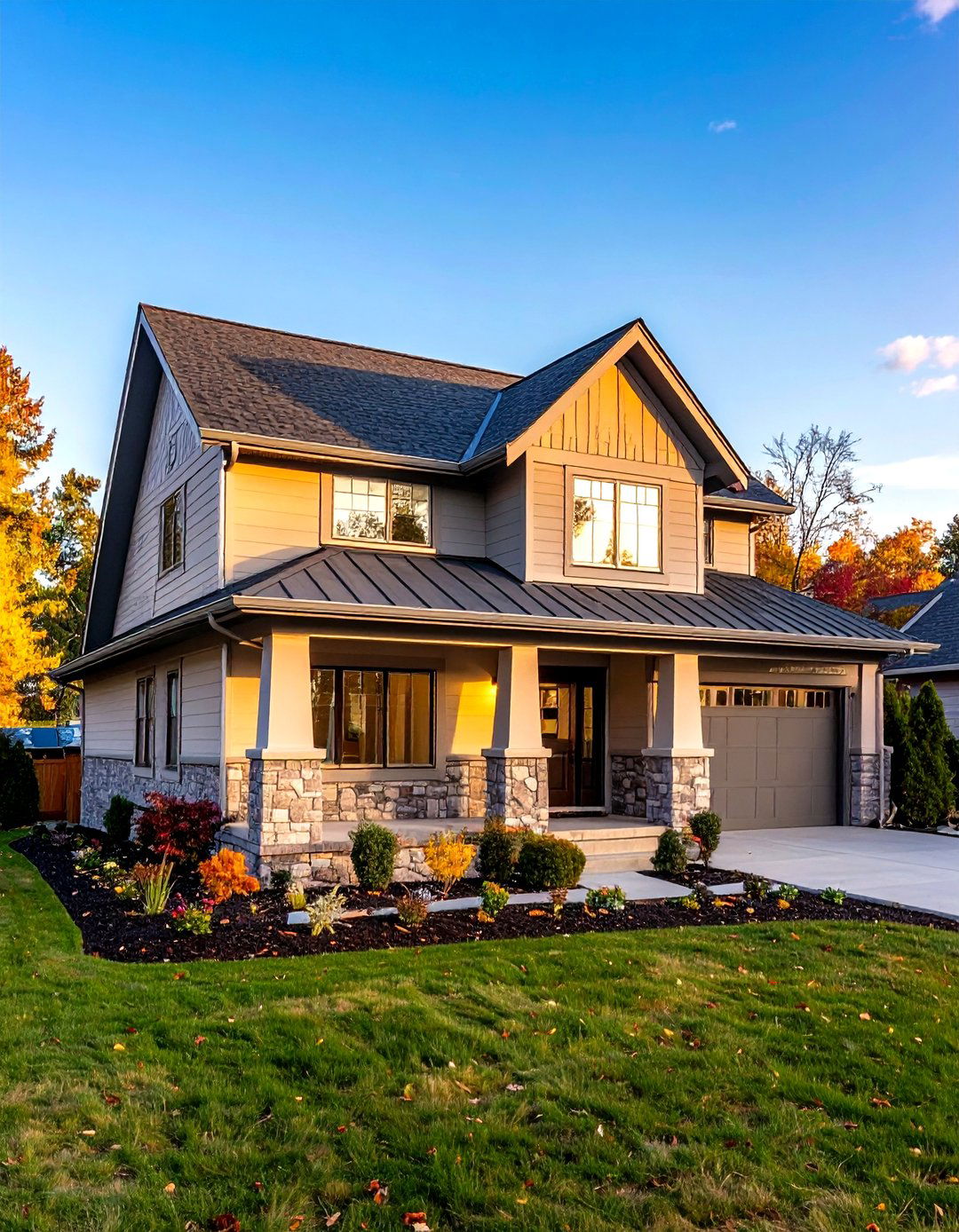
Pairing clay siding with a cool slate-gray roof introduces sophisticated contrast that feels fresh yet familiar. The gray roof’s subtle blue undertone visually cools the sun-warmed façade, a trick designers use to balance south-facing elevations. Accent the entry with brushed-nickel fixtures—gray’s metallic cousin—then repeat that note on foundation vents for harmony. A mid-value gray gutter system blends roof and siding, streamlining the roof-line. Because slate is fire-resistant and long-lived, this combo marries beauty and durability. Allura USA
4. Seaside Victorian with Breezy Clay Boards
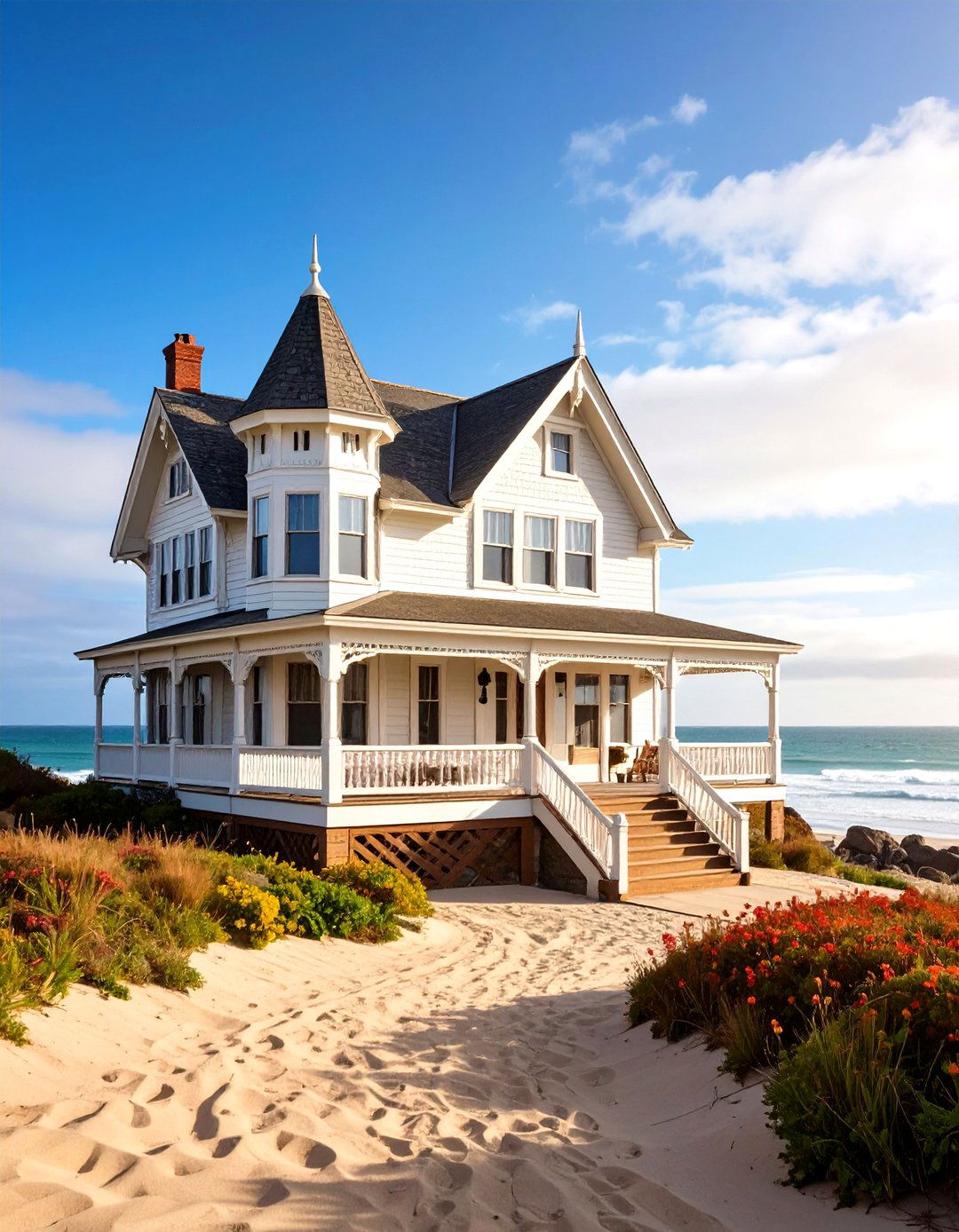
Victorian turrets and gingerbread trim gain coastal ease when wrapped in clay clapboards trimmed in weathered white. A sandy-tan porch skirt grounds tall proportions, while a warm golden-brown roof nods to historic cedar shakes but lasts longer in modern composite form. This palette is common on heritage homes along the Jersey Shore—proof that clay withstands salt, wind, and summer glare. Finish balustrades in semi-gloss to repel marine moisture, and choose corrosion-resistant stainless fasteners to prevent streaking on light trim. Allura USA
5. Crisp White-Trim Classic
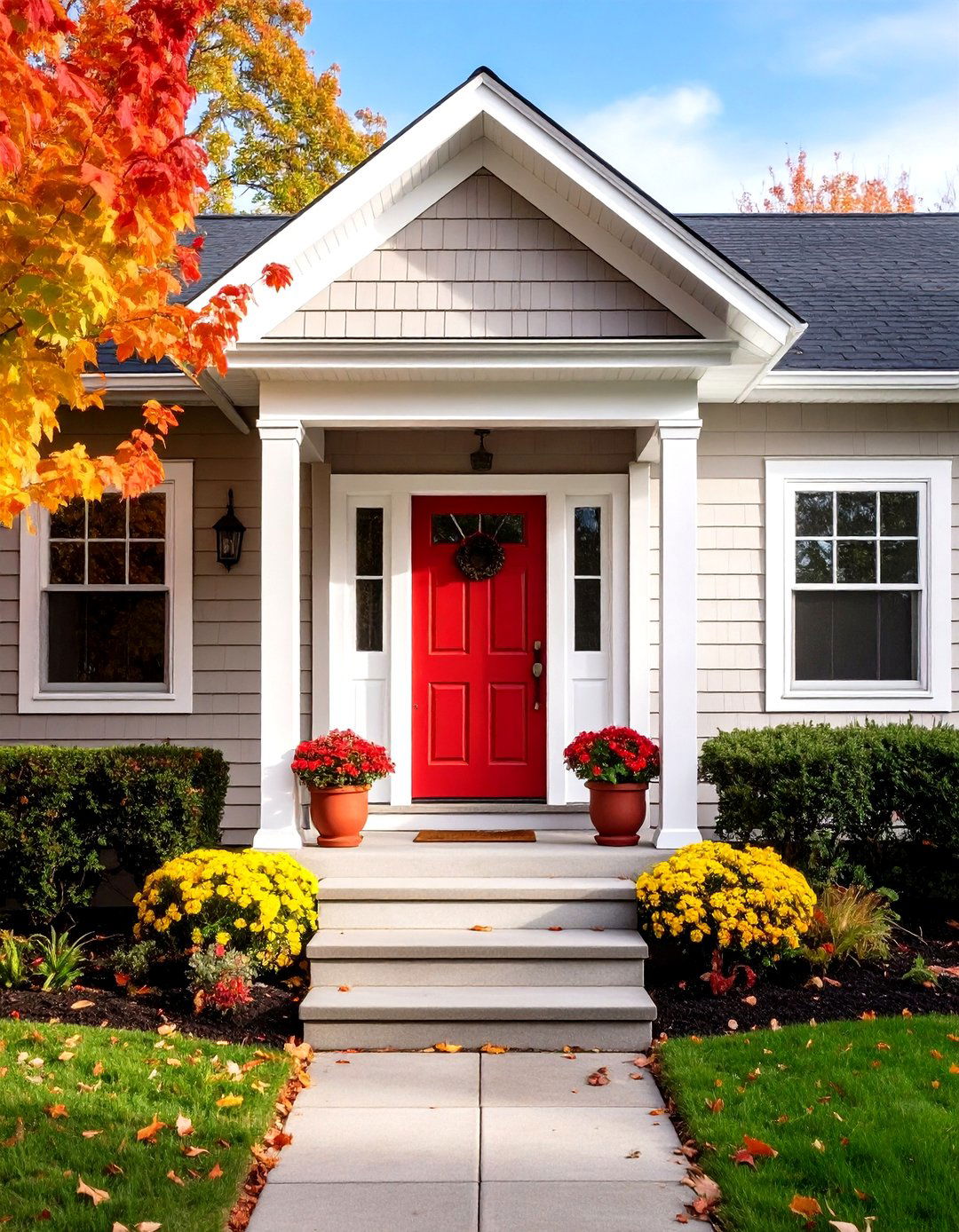
Few visuals scream “all-American” like clay siding framed by generous white trim boards. White corner boards sharpen edges, while thick window casings make double-hung sashes pop. To keep maintenance low, select factory-finished PVC trim; it resists mildew common in humid climates. Hide attic vents inside white gable pediments so ventilation doesn’t interrupt the tidy lines. For a punctuation mark, paint the front door heritage red—historically approved for colonial homes and instantly Instagram-ready. Allura USA
6. Artistic Pops amid Earthy Clay
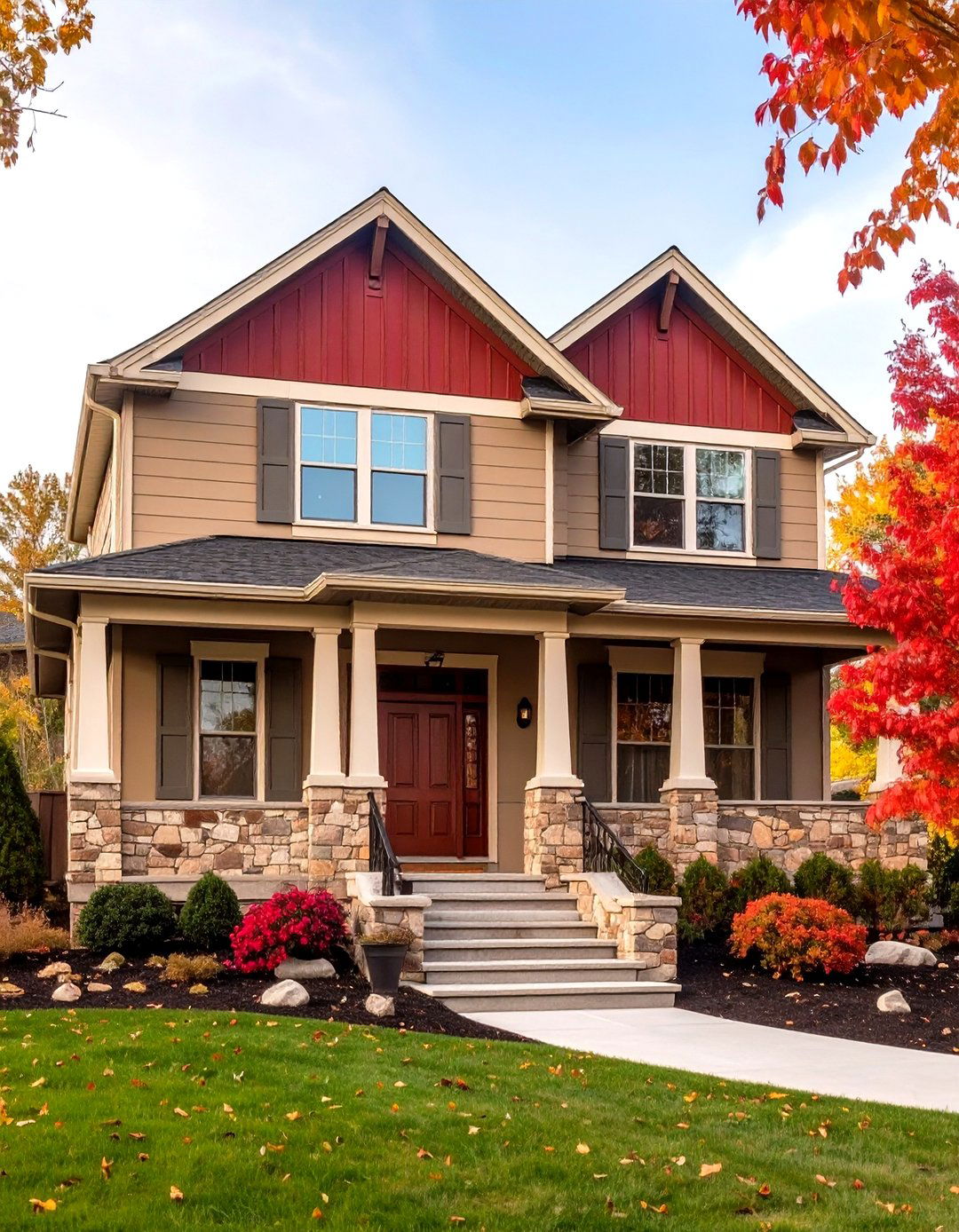
Treat clay siding as gallery wall and punch in small splashes: a tomato-red rake board, sage-green shutters, or a butter-cream fascia. Tone the accents three steps brighter than the body for cohesion, and repeat each accent at least twice for rhythm. Stone porch piers—especially variegated fieldstone—lend extra color fragments without paint, making this approach perfect for homeowners craving creativity on a budget. Allura USA
7. Texture-Rich Dutch Lap & Honeycomb Mix
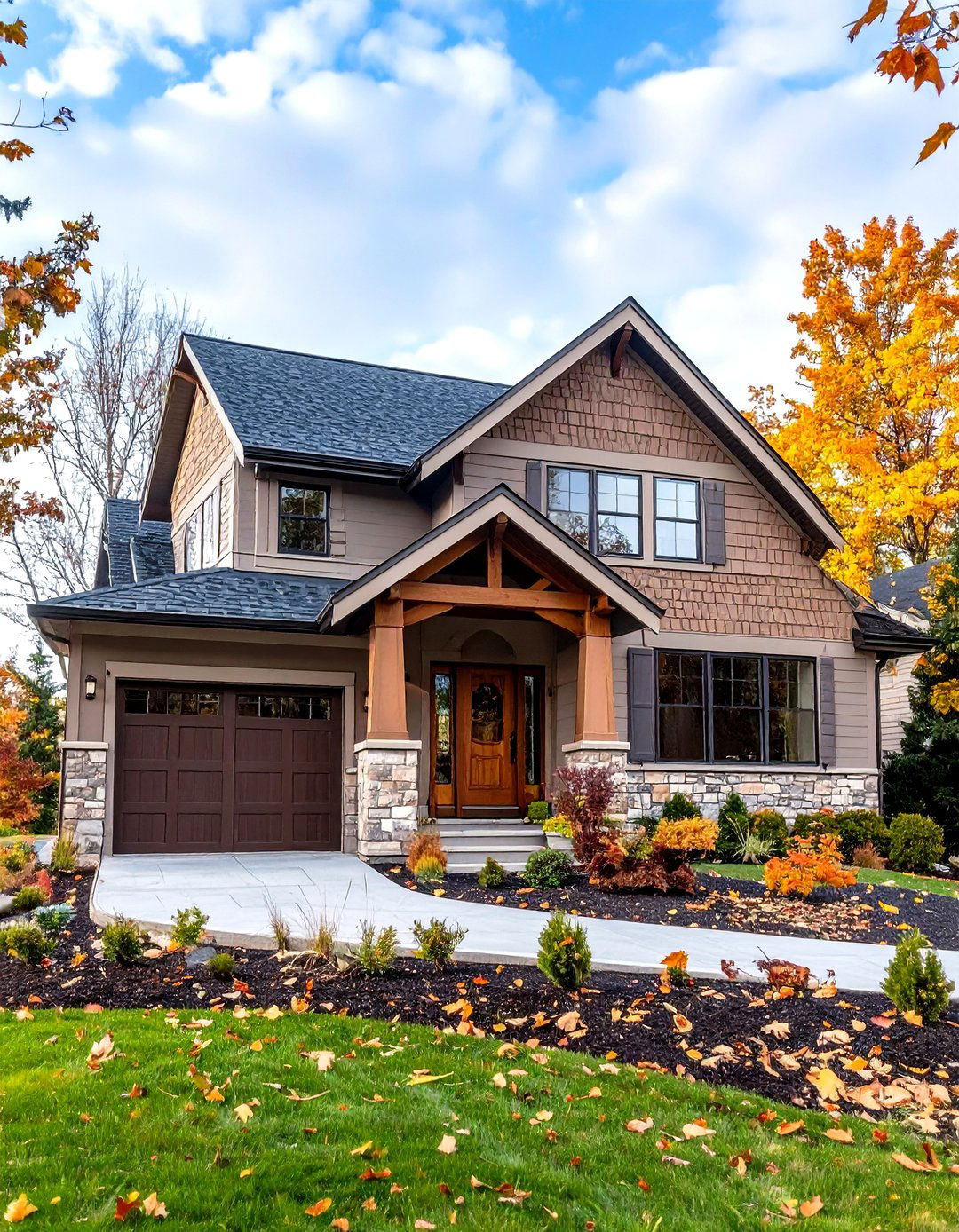
When hue stays neutral, texture steals the show. Combine traditional Dutch lap boards on the main walls with honeycomb-patterned shingle accents in dormers. The subtle shadow lines add movement that fools the eye into thinking the house is larger. Tie everything together by painting board-and-batten shutters the same clay color—uniform hue, varied profile. Finish foundations in split-face block for yet another tactile layer resistant to mower impacts. Allura USA
8. White-on-White Framed by Slim Black Gutters
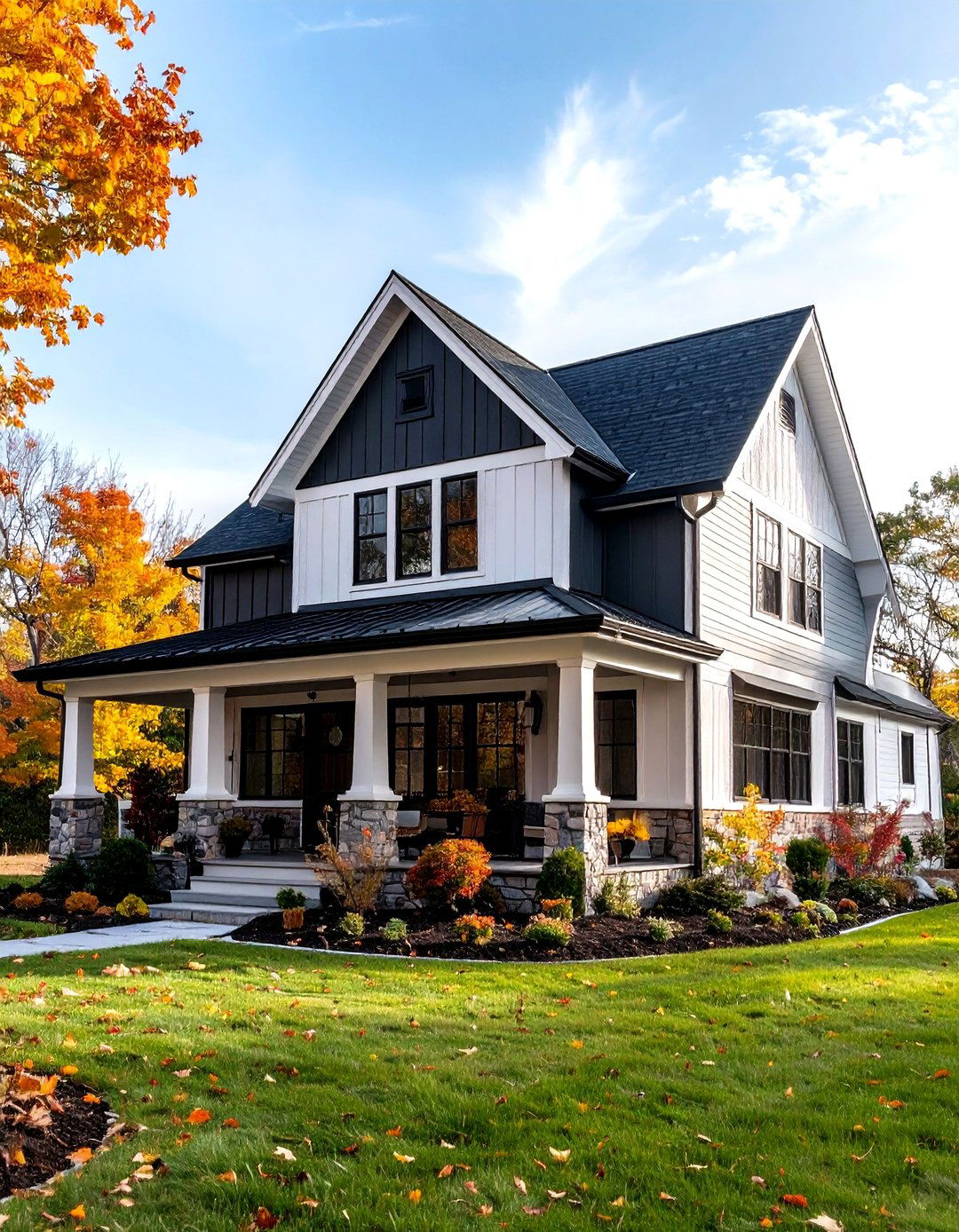
Here, wide white trim is doubled-framed by charcoal gutters and downspouts, creating a graphic outline that modernizes farmhouse or Cape layouts. Because gutters rarely match trim, choosing black transforms a necessity into a design stroke. Specify high-performance baked-enamel aluminum to prevent peeling where water runs. Inside the frames, clay siding reads even warmer, echoing weathered barn boards without maintenance headaches. Allura USA
9. Grey-Green Harmony for Mountain Serenity
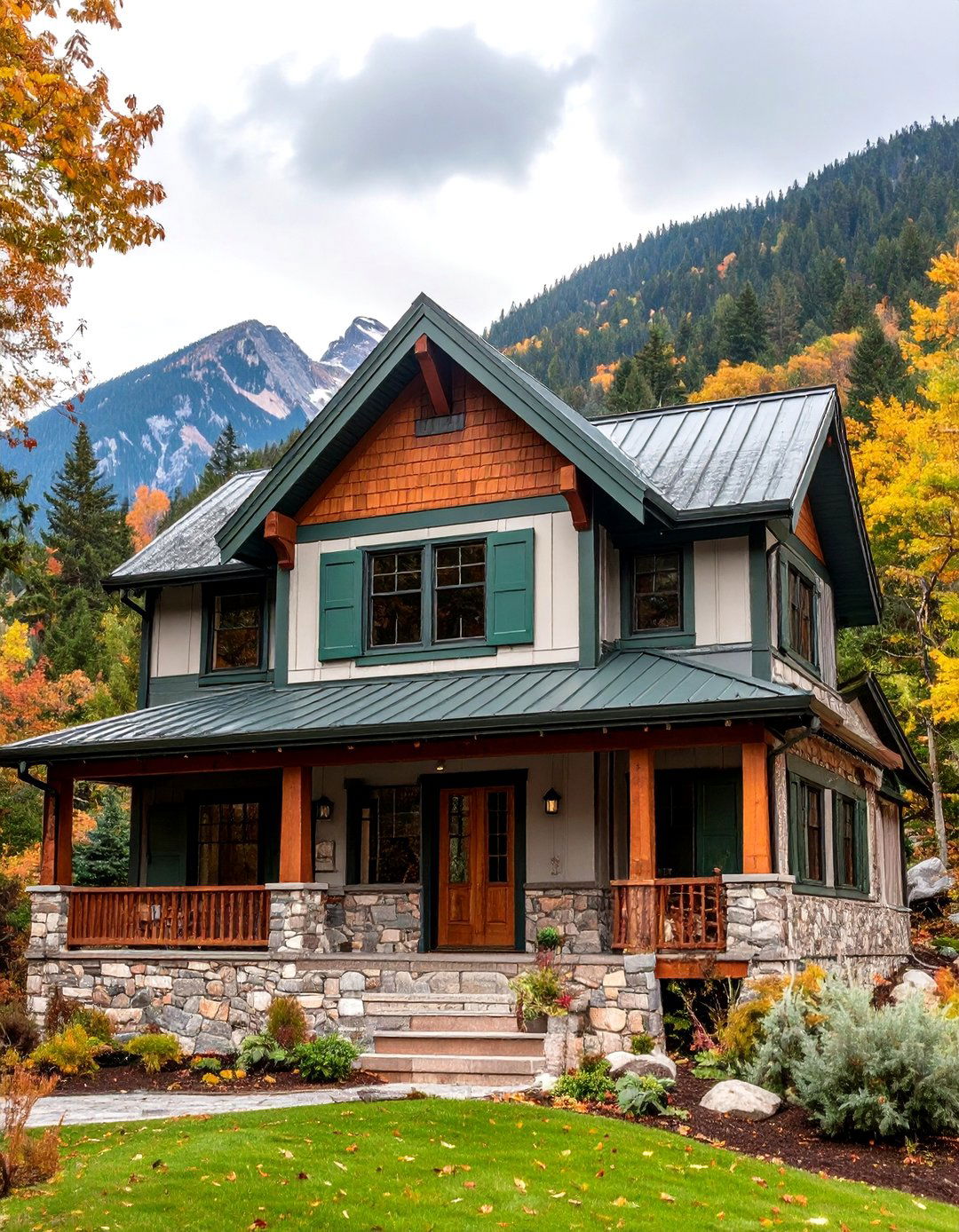
Clay siding topped with a mid-gray roof meets gray-green shutters for a subtle tri-tone that blends beautifully with pine backdrops. The green hint quiets the façade against forested lots while allowing year-round contrast with snowcaps. Select low-lustre finishes to avoid mirror-like reflections, and use galvanized gutter guards; falling needles slip off instead of clogging perforations. Allura USA
10. Seamless Contemporary Clay Veneer
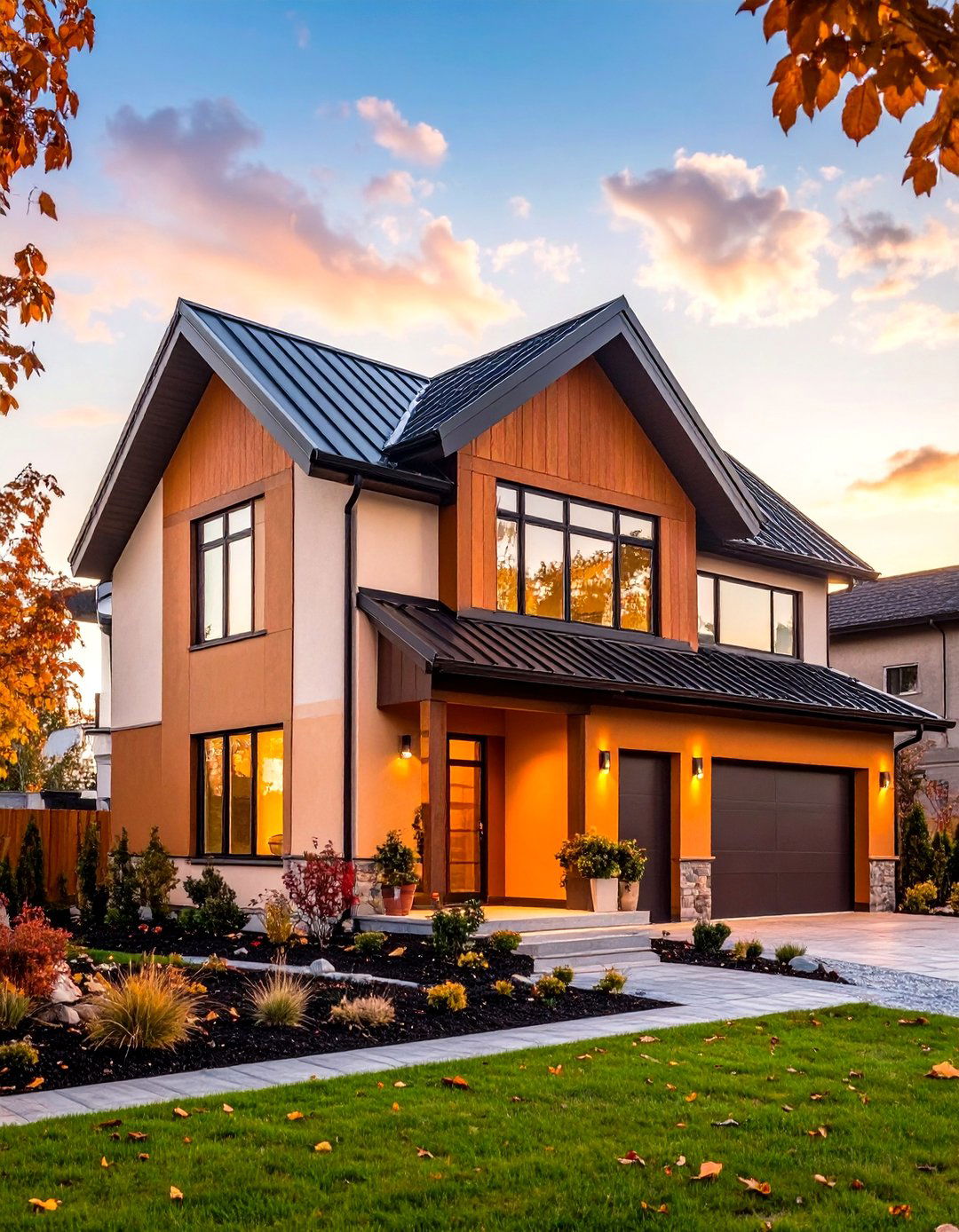
Architects chasing crisp minimalism now apply spray-on mineral coatings that create a joint-free clay skin across fiber-cement panels. The monolithic look eliminates horizontal shadow lines, letting oversized windows star. Because seams are gone, schedule thermal-imaging diagnostics before coating to correct any sheathing gaps—you’ll never access them again. Pair with concealed-fastener metal roofs for a near-futuristic silhouette. Allura USA
11. Evergreen Trim for Nature-Forward Warmth
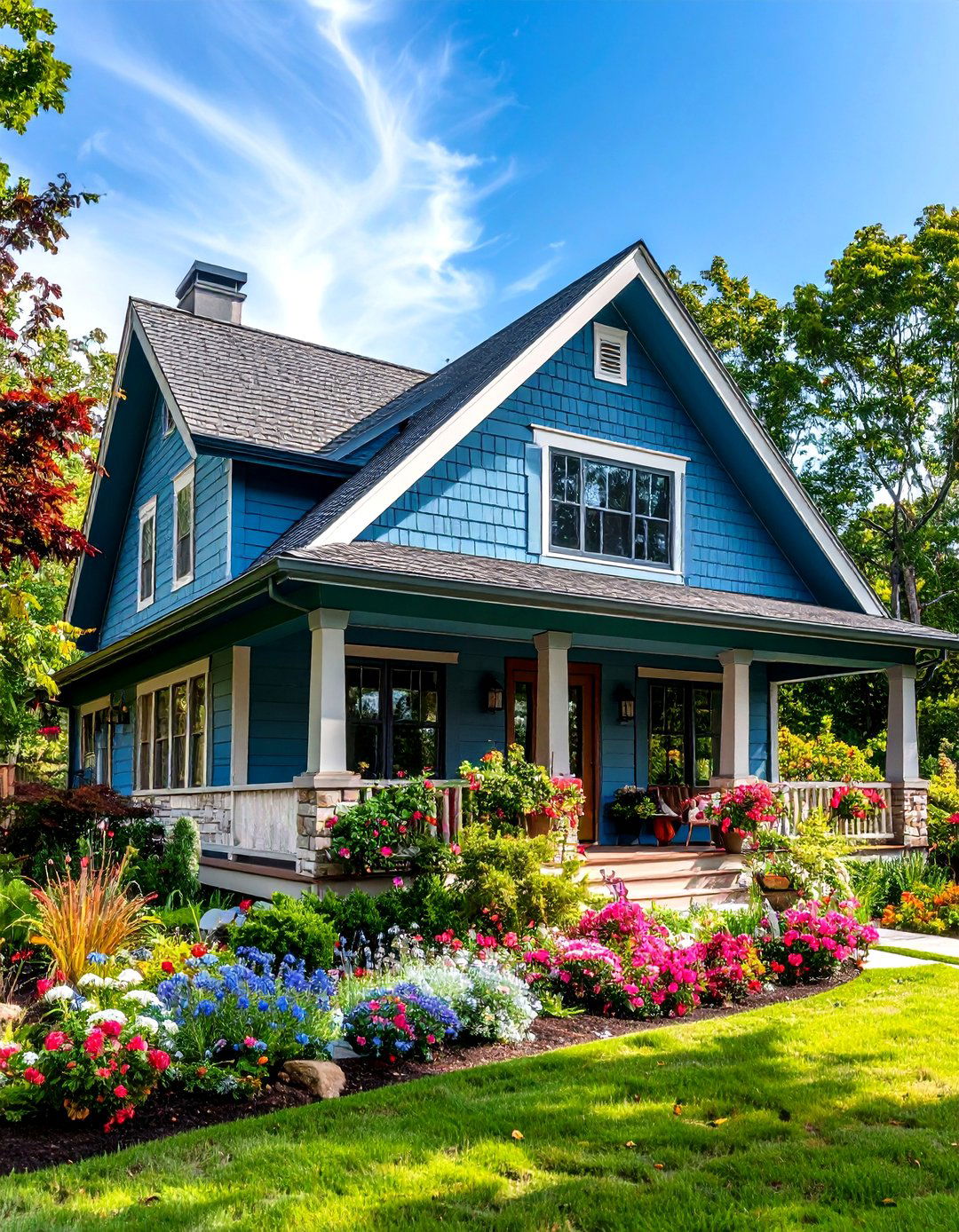
Designers predicting 2025 exteriors urge rich greens teamed with neutrals for biophilic calm. Try Sherwin-Williams’ evergreen-leaning “Wellspring” hues on casings and gable vents so plantings appear to spill onto the structure. The deep tone recedes visually, letting clay walls dominate while still introducing color. Finish porch ceilings in haint blue to keep insects at bay and subtly echo sky within the earth-focused scheme. Better Homes & Gardens
12. Rustic Cedar and Clay Blend
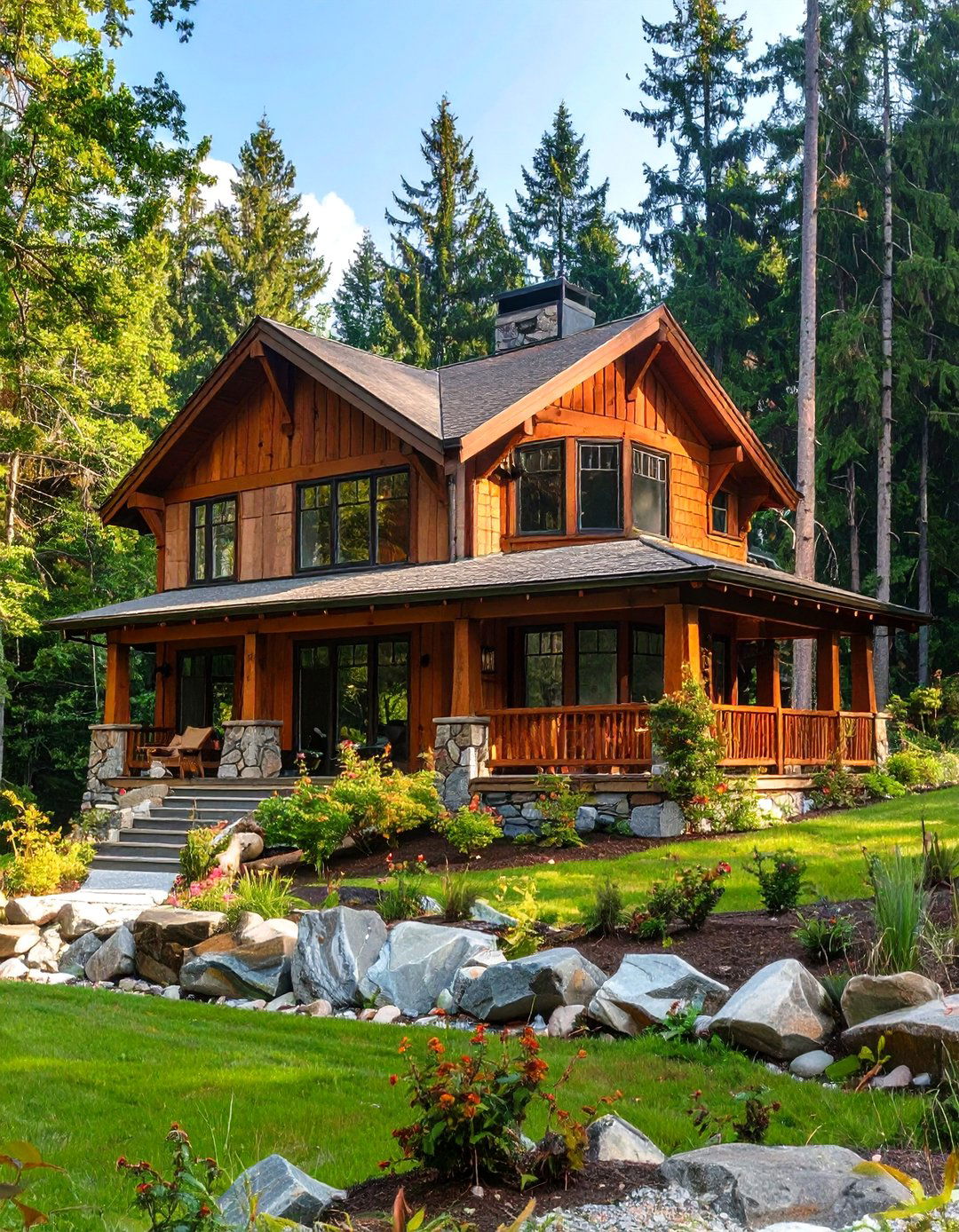
Nothing reads mountain-lodge like smoky-stained cedar posts against clay siding. Charred-effect stains (yakisugi style) darken posts while sealing them, and their carbon tones match oil-rubbed bronze sconces. Because clay is warm rather than stark, the transition from charred wood to neutral wall feels intentional, not harsh. Lay river-rock skirting where splashback occurs; stone hides mud stains better than painted concrete. Diamond Kote® Siding System
13. Terracotta Roof for Mediterranean Flair
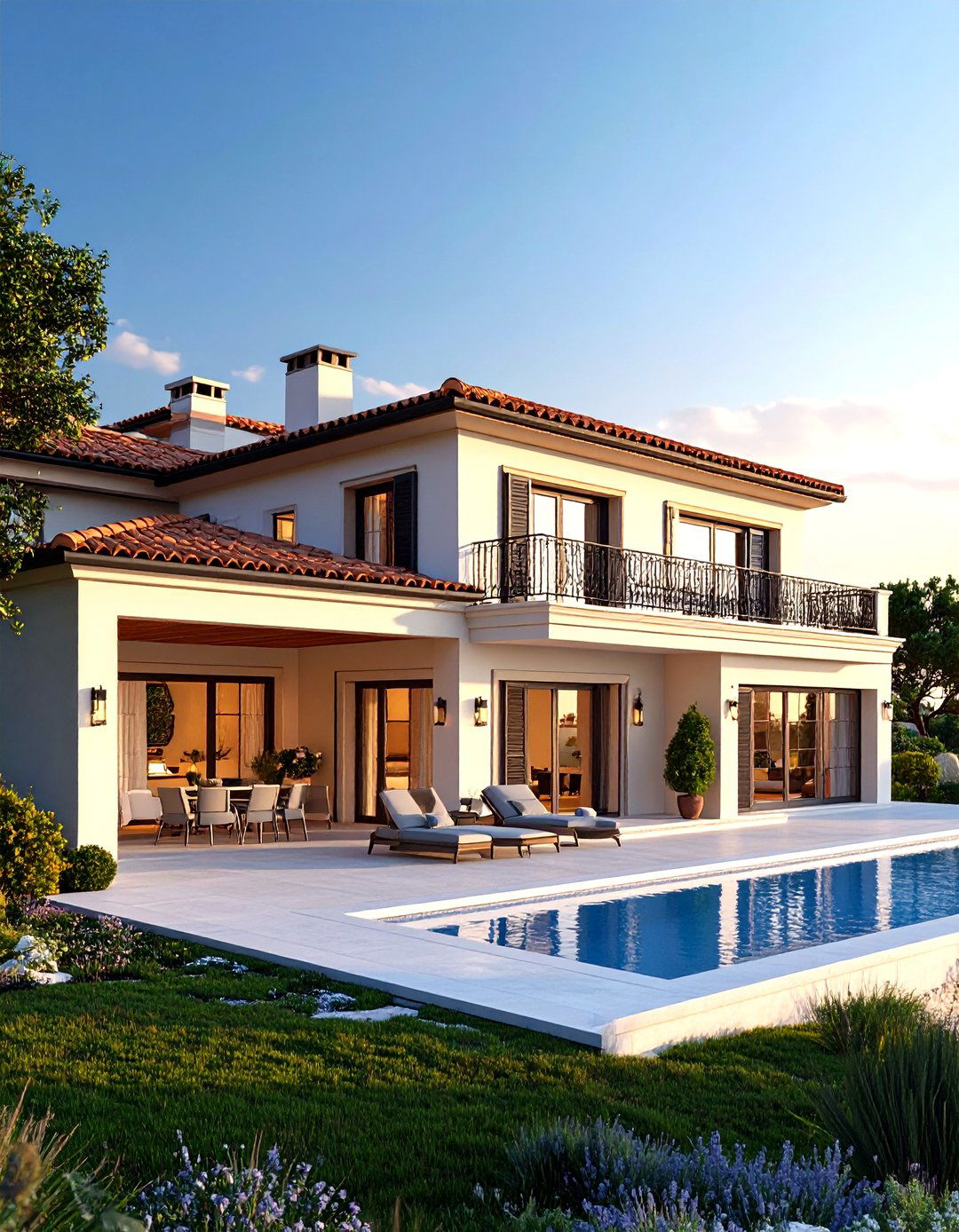
Swap asphalt for curved terracotta tiles and clay siding suddenly feels Tuscan. Keep window trim pale cream to mimic sun-bleached stucco reveals, and add wrought-iron balconettes for texture without busy color. Because terracotta is porous, specify breathable underlayment and ensure gutter drop outlets sit lower to clear thicker tile edge. Finish shutters in warm gray—the natural companion to terracotta’s orange undertone according to historic palette guides. Benjamin Moore
14. Triadic Accent Play for Bold Personalization
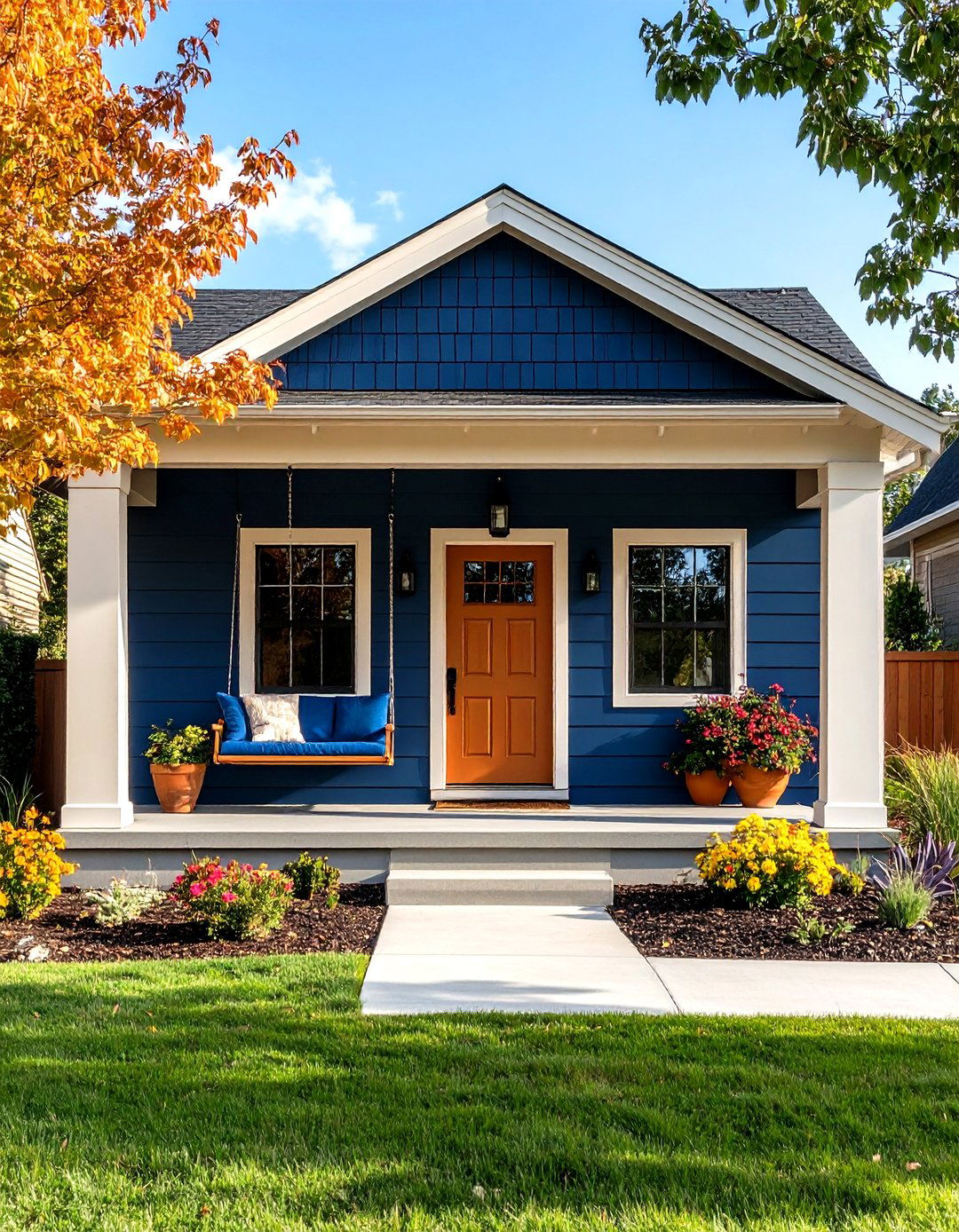
Color consultants recommend muted triadic schemes—think softened terracotta, straw yellow, and dusty blue—to achieve vibrancy without chaos. Use clay siding as the neutral anchor, paint the door ochre, and choose a weatherproof navy porch swing cushion for balance. Stick to the classic 60-30-10 rule: 60 percent clay body, 30 percent roof/trim neutrals, 10 percent triadic pop. This delivers energy while respecting neighbors’ palettes. Livingetc
15. Mid-Century Metal Contrast
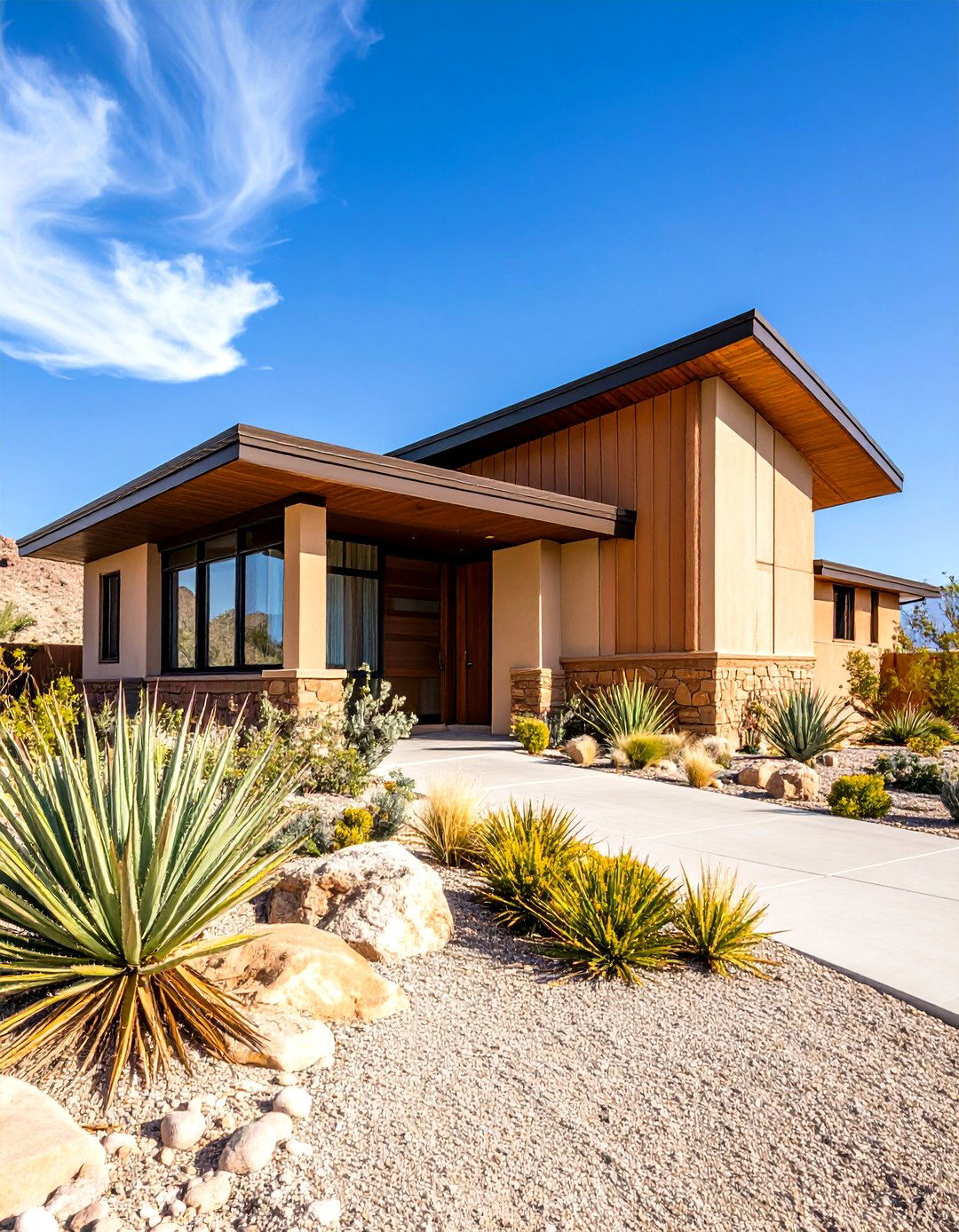
Clay siding trimmed with sleek, dark bronze aluminum panels channels mid-century desert ranches. The low-slope roofline and metal fascia sharpen horizontal planes, letting landscaping—think spiky yucca—take center stage. Metal’s cool sheen offsets clay’s warmth, proving neutrals can still show tension. Opt for concealed fasteners and factory powder coat rated for 30-year color retention to avoid chalking in high UV zones. Sherwin-Williams
16. Inviting Porch Punctuated by Color
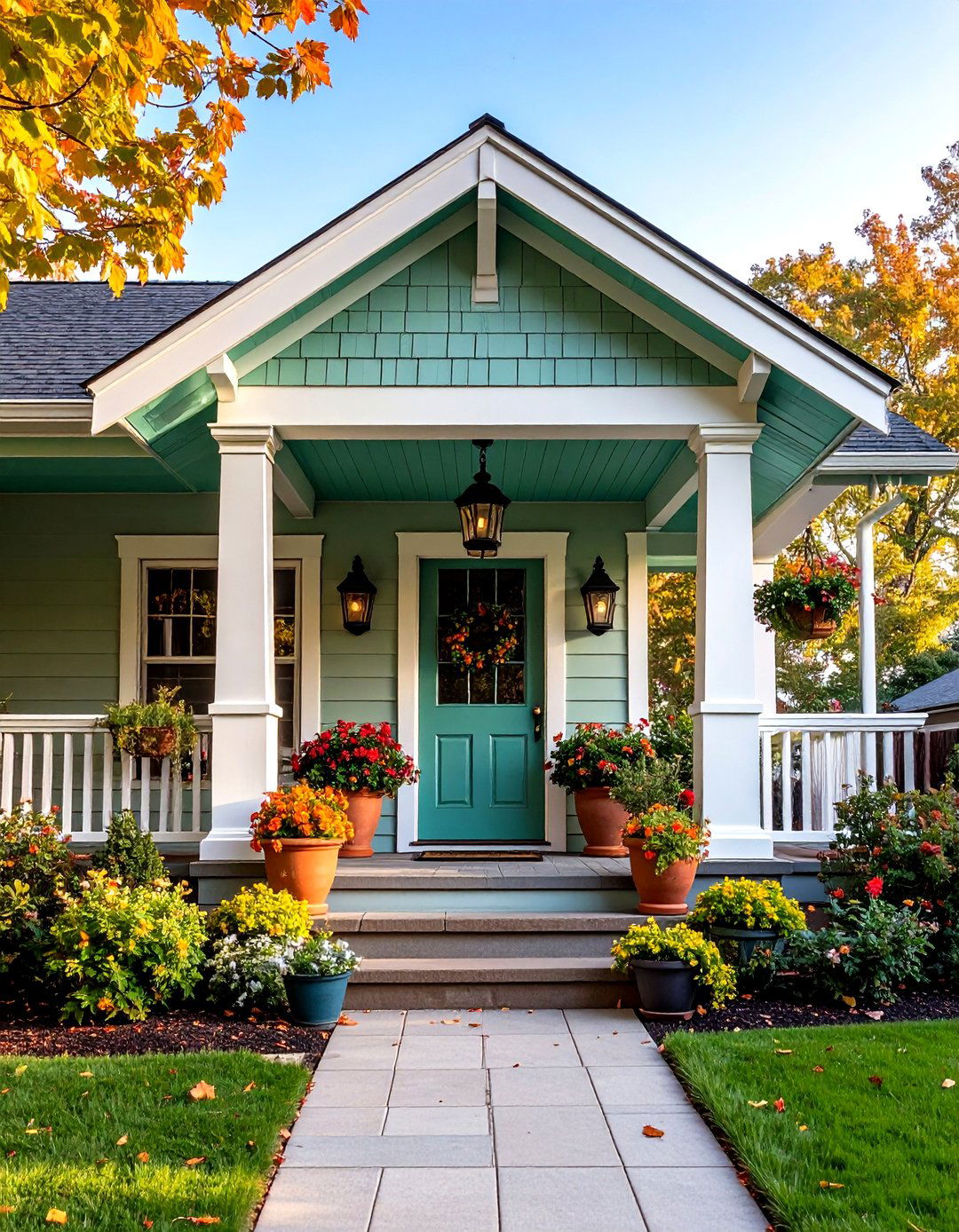
Home-and-garden editors emphasize front porches as curb-appeal gold. Paint porch ceilings a pale aqua to reflect light onto clay walls, then highlight columns with off-white bases and terra-cotta planters. Swap out a single porch board for cedar to cue visitors toward the door. Solar-powered lanterns in bronze echo clay’s undertone and save wiring costs. Homes & Gardens
17. Modern Black-Framed Windows on Clay
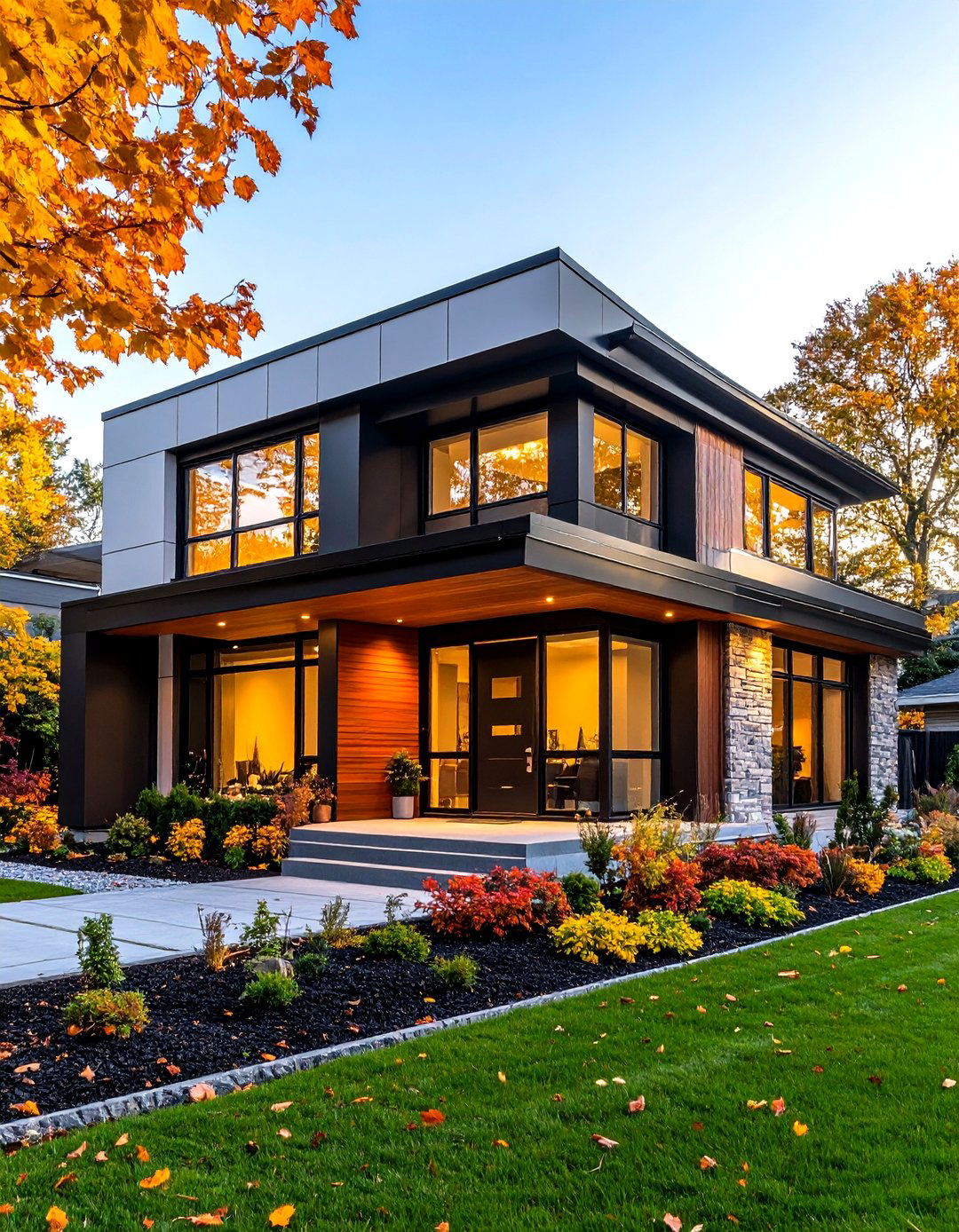
Large, matte-black window frames continue ruling new builds. Against clay walls they appear almost gallery-like, crisping sightlines while retaining warmth. Select thermally broken aluminum to curb heat transfer, and extend interiors by matching window mullions to black cabinet hardware. Keep roof and gutters neutral to avoid competing frames; this minimalist trio lets architectural volume sing. The Spruce
18. Stone and Copper Richness
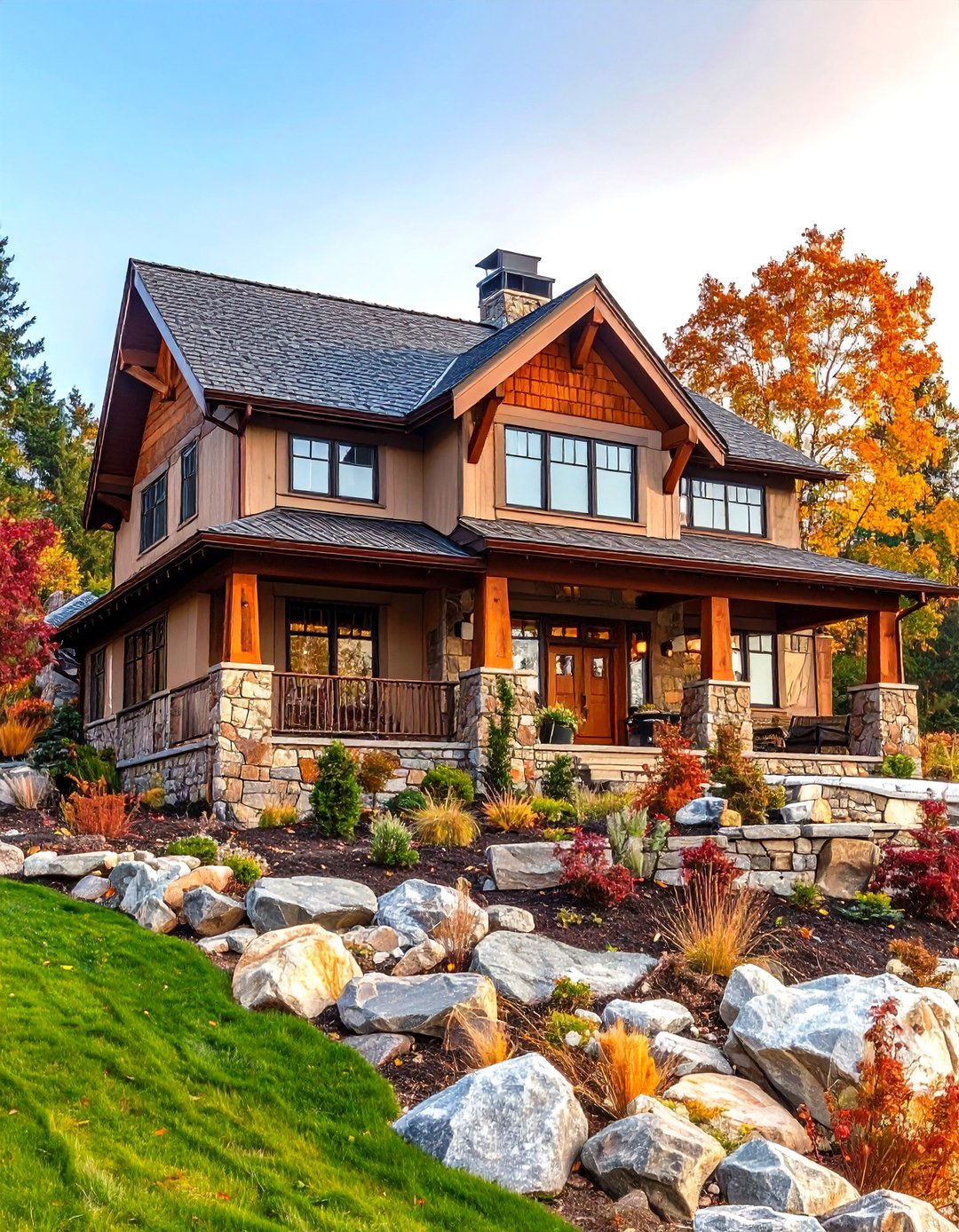
Pair locally quarried ledgestone bases with copper gutters—both materials deepen tonally over time, echoing clay’s organic vibe. Copper starts bright but mellows to verdigris, offering live color evolution that never clashes with neutral clay. Install snow guards on copper roofs in snowy regions to prevent ice slides that might dent soft metal. Seal stone caps to prevent efflorescence staining warm siding beneath. LP Building Solutions
19. Vertical Board-and-Batten Farmhouse Twist
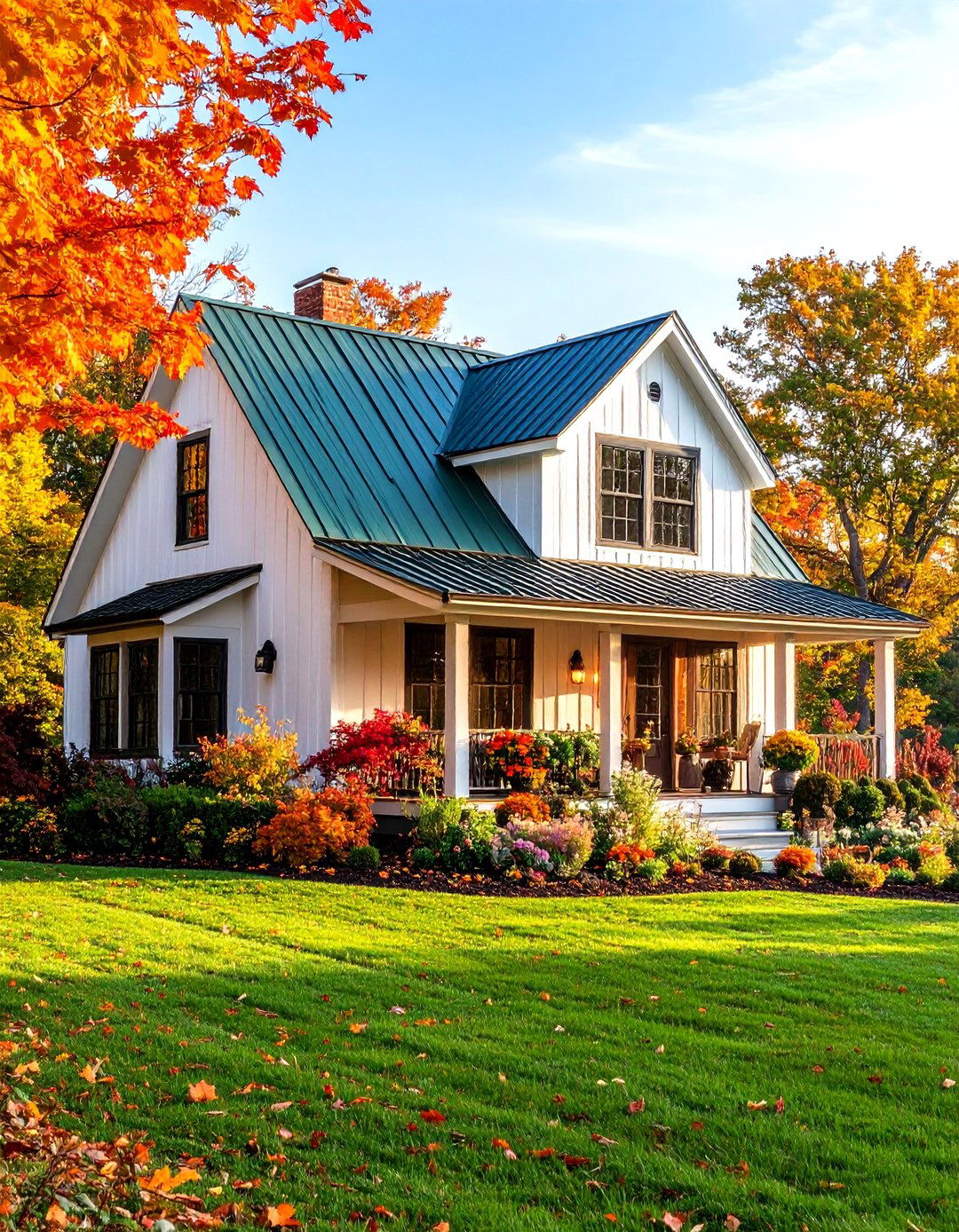
Flip siding orientation from horizontal to vertical board-and-batten for farmhouse aesthetics and perceived height boost. Paint battens two shades darker than the boards to add subtle striping without changing hue family. Combine with standing-seam metal roofs—the vertical repetition unifies top and walls. Use breathable rain-screen underlayment beneath clay-toned fiber cement to keep boards straight in humid summers. LP Building Solutions
20. Sustainable Modular Palette with Factory Finish
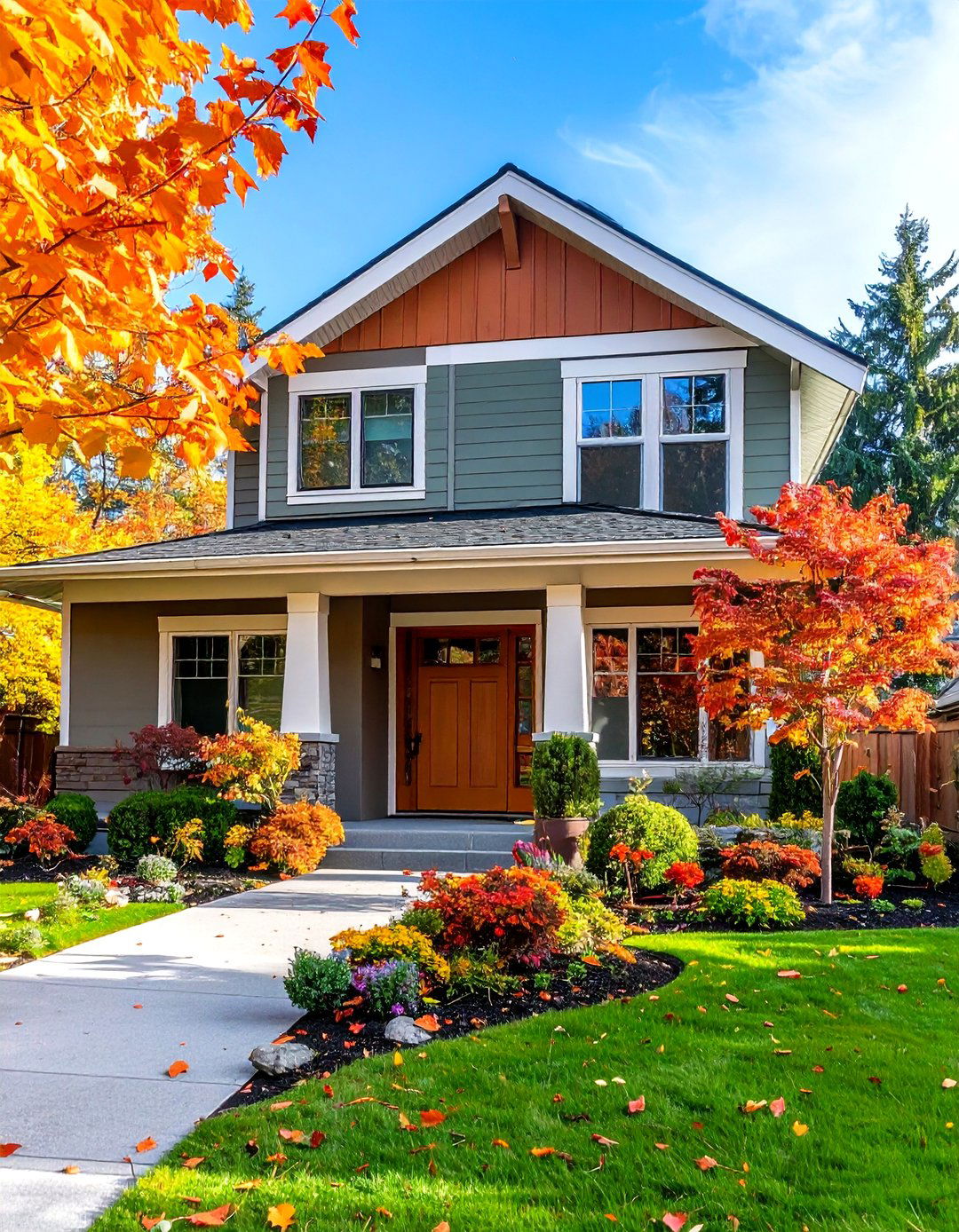
LP SmartSide’s ExpertFinish offers factory-cured clay-adjacent colors that ship ready to install, eliminating on-site VOCs and weather delays. Choose modular 16-foot boards to reduce seams and waste, then cap joints with color-matched caulk warranted for 15 years. Because finishes cure in controlled environments, they resist fading 20 percent longer than field-painted siding, ideal for sun-soaked façades. LP Building Solutions
Conclusion:
Natural clay siding’s understated warmth morphs fluidly—from Colonial formality with black shutters to triadic-accented modernism—by simply varying trim, texture, and material pairings. Whether you lean rustic with charred cedar, coastal with terracotta, or high-contrast with midnight windows, clay’s earth-tone roots keep your exterior grounded, timeless, and inviting. Armed with these twenty strategies, you can shape a façade that honors nature’s palette while expressing unmistakable personality—one warm clay plank at a time.


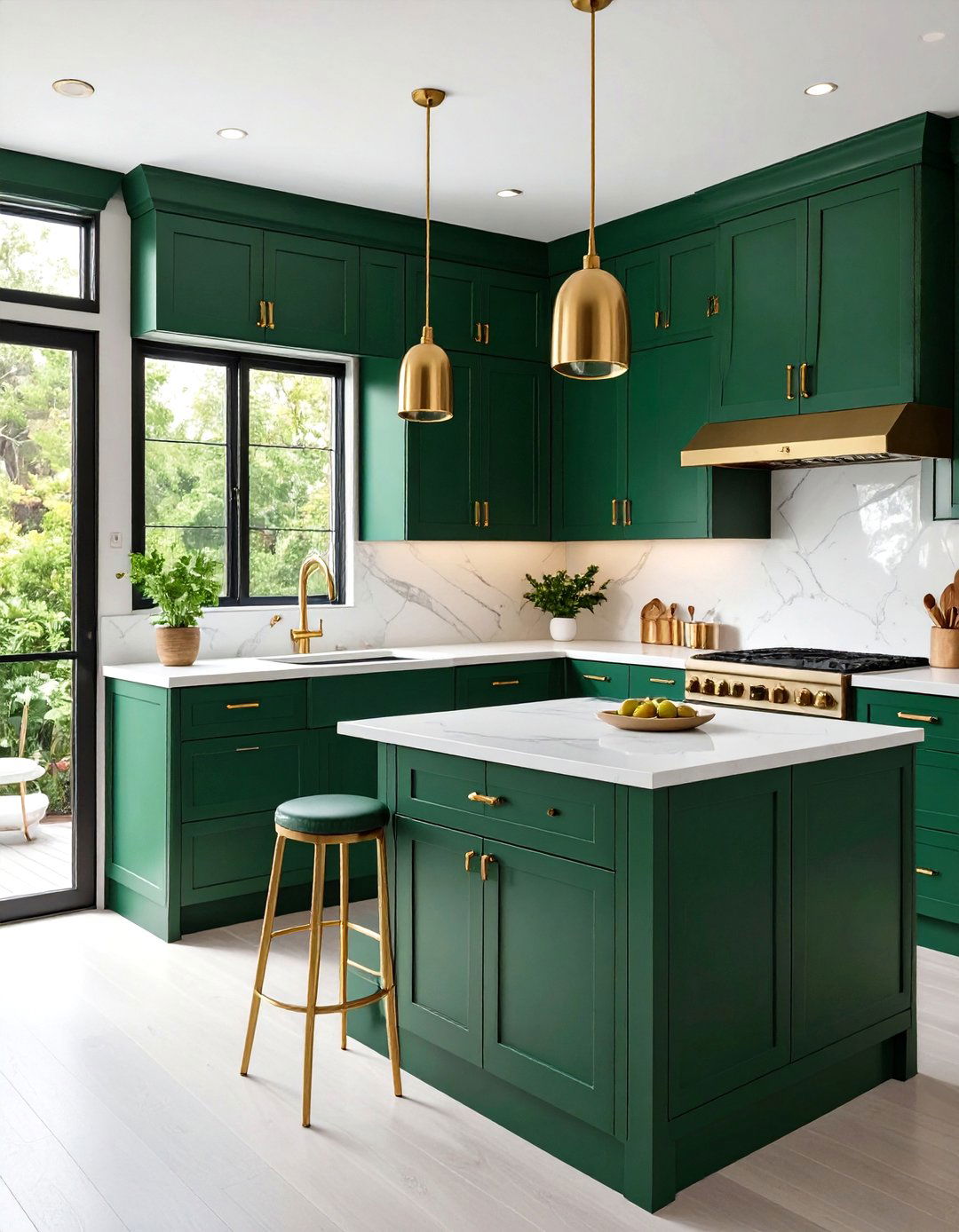





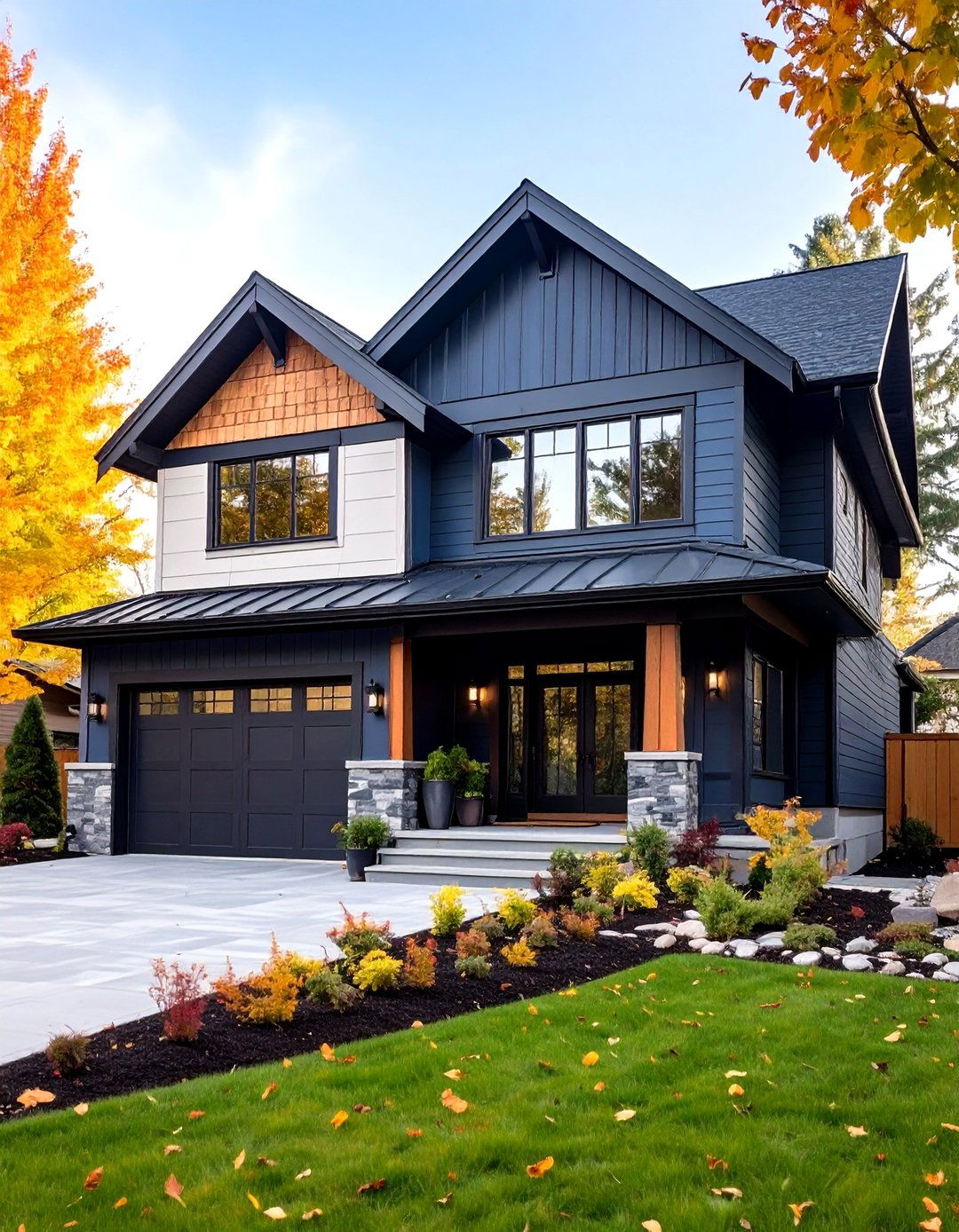
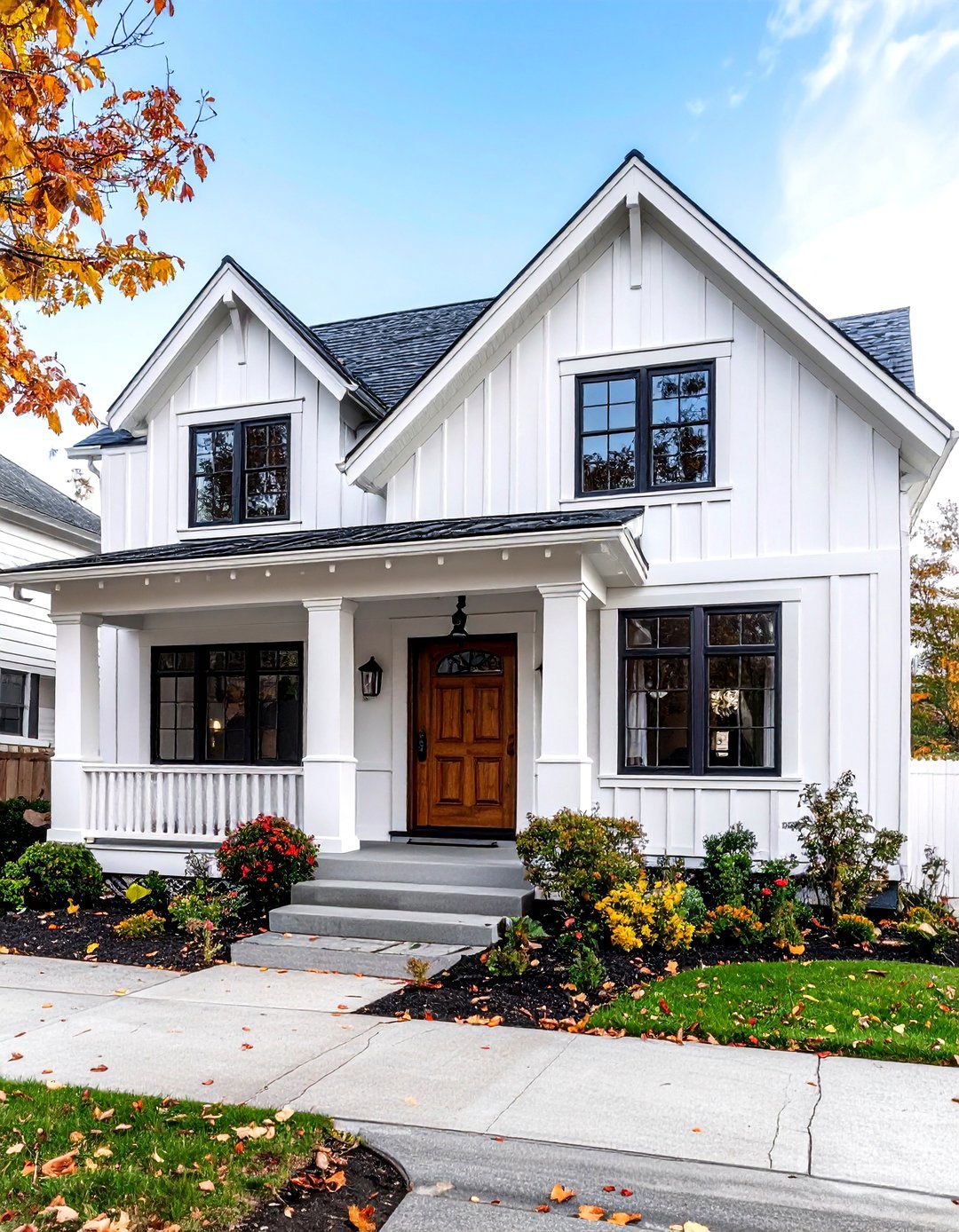
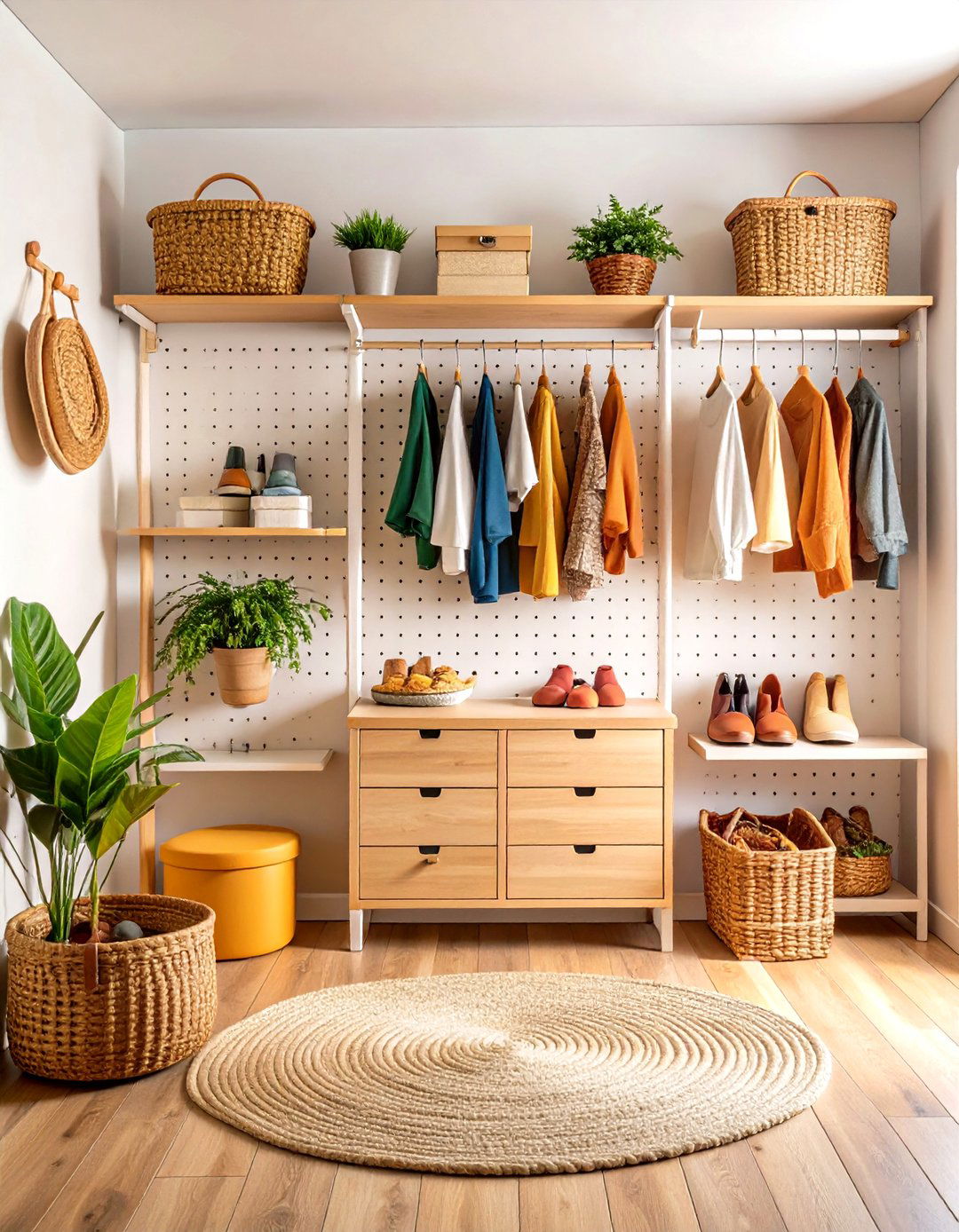
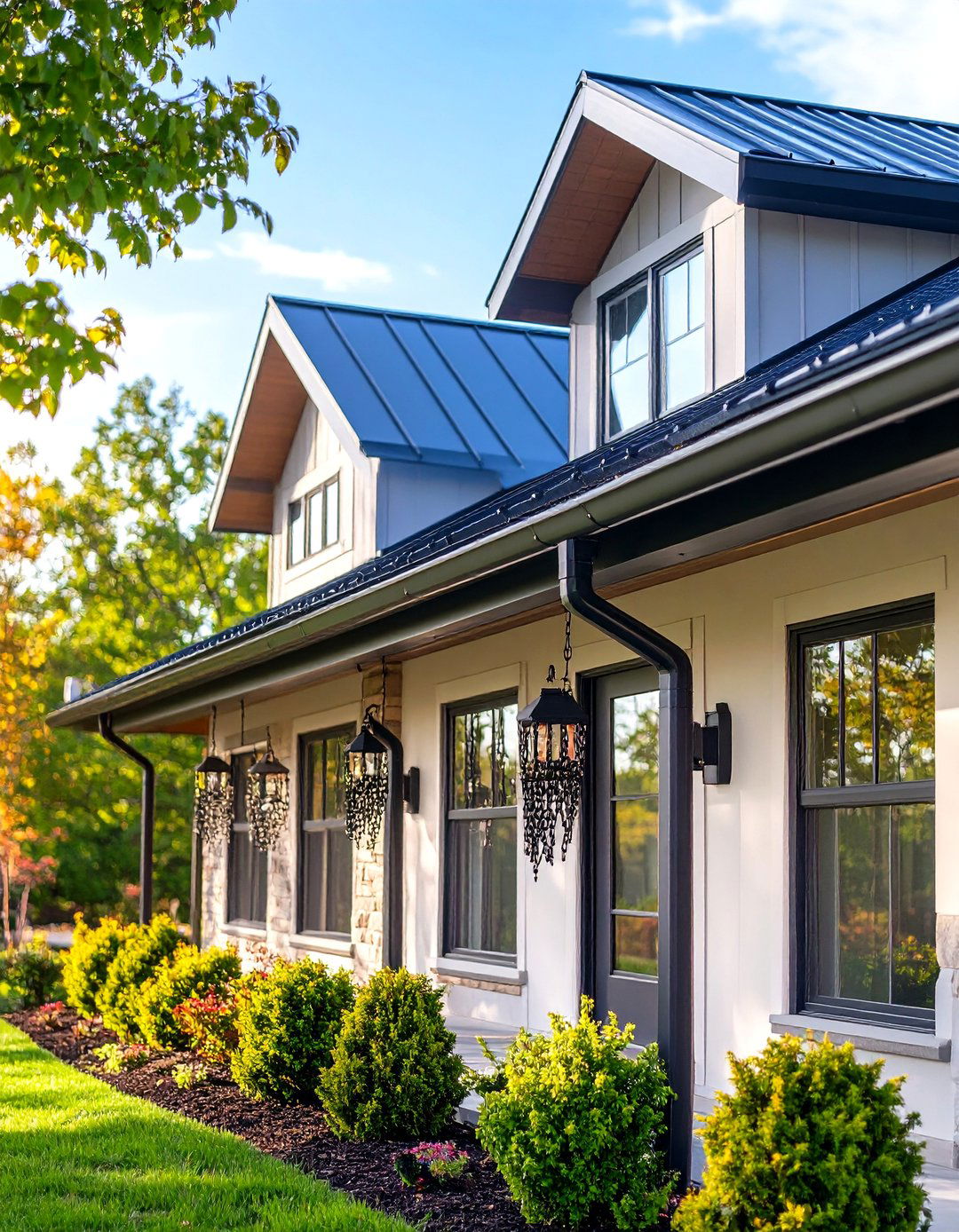
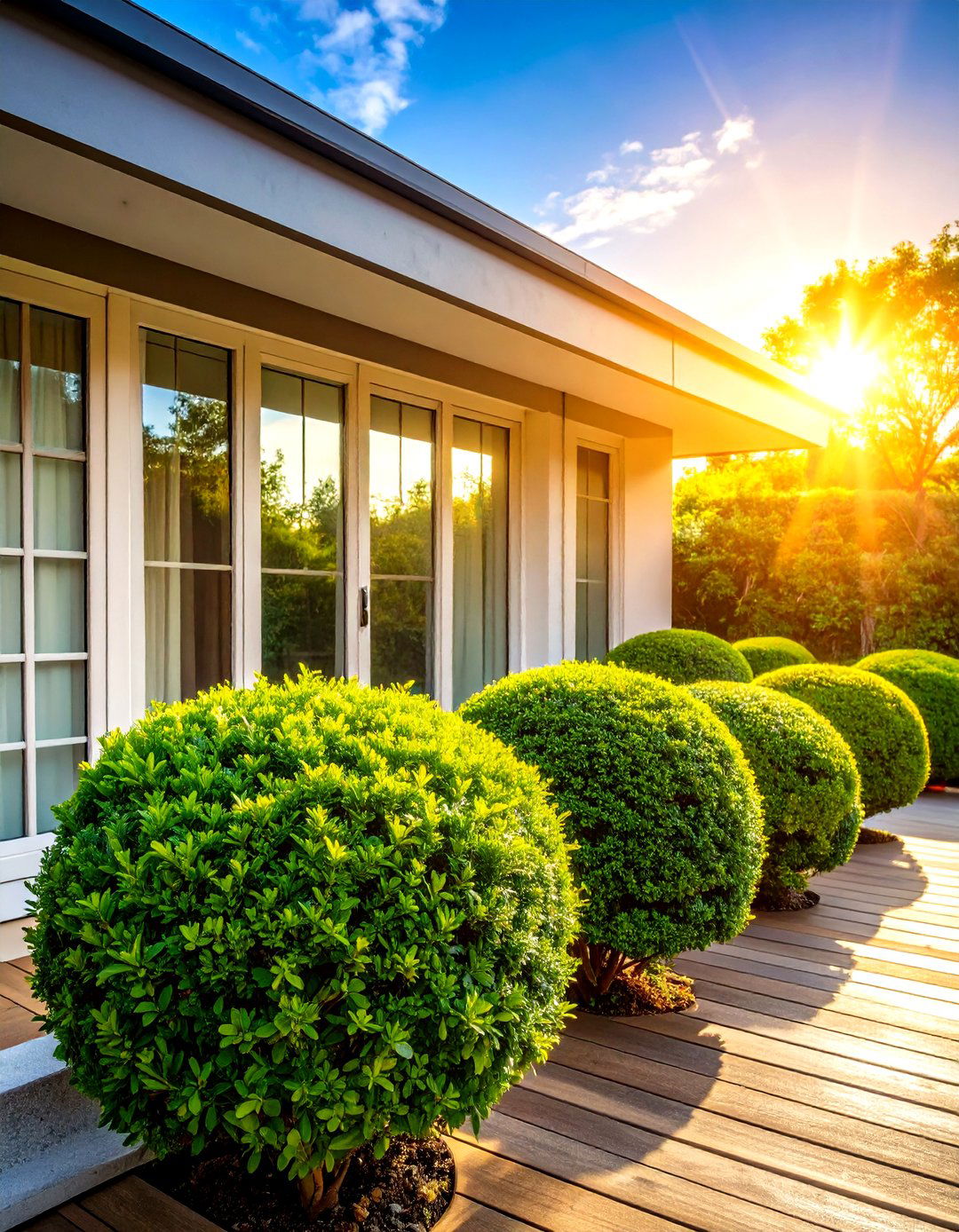

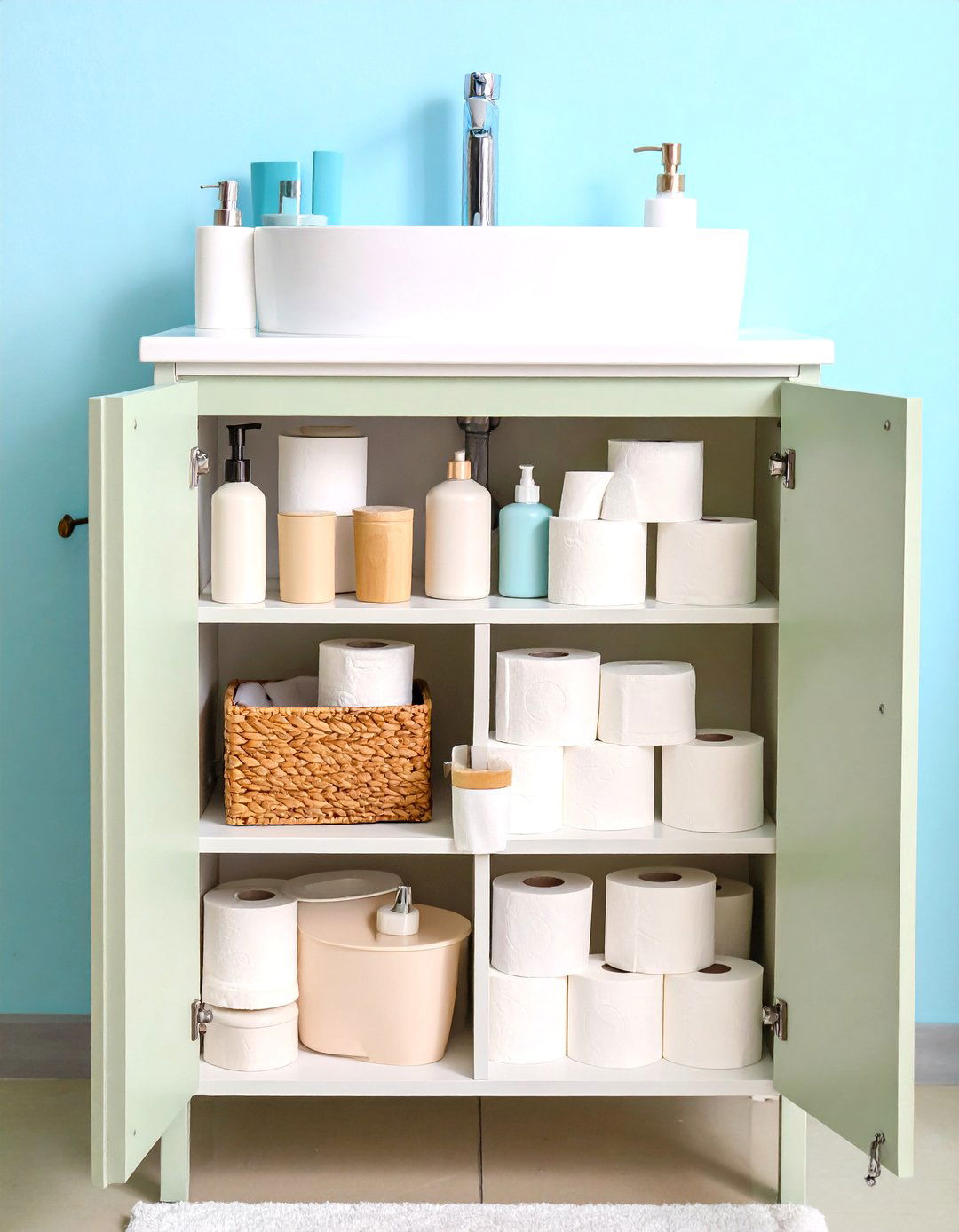

Leave a Reply